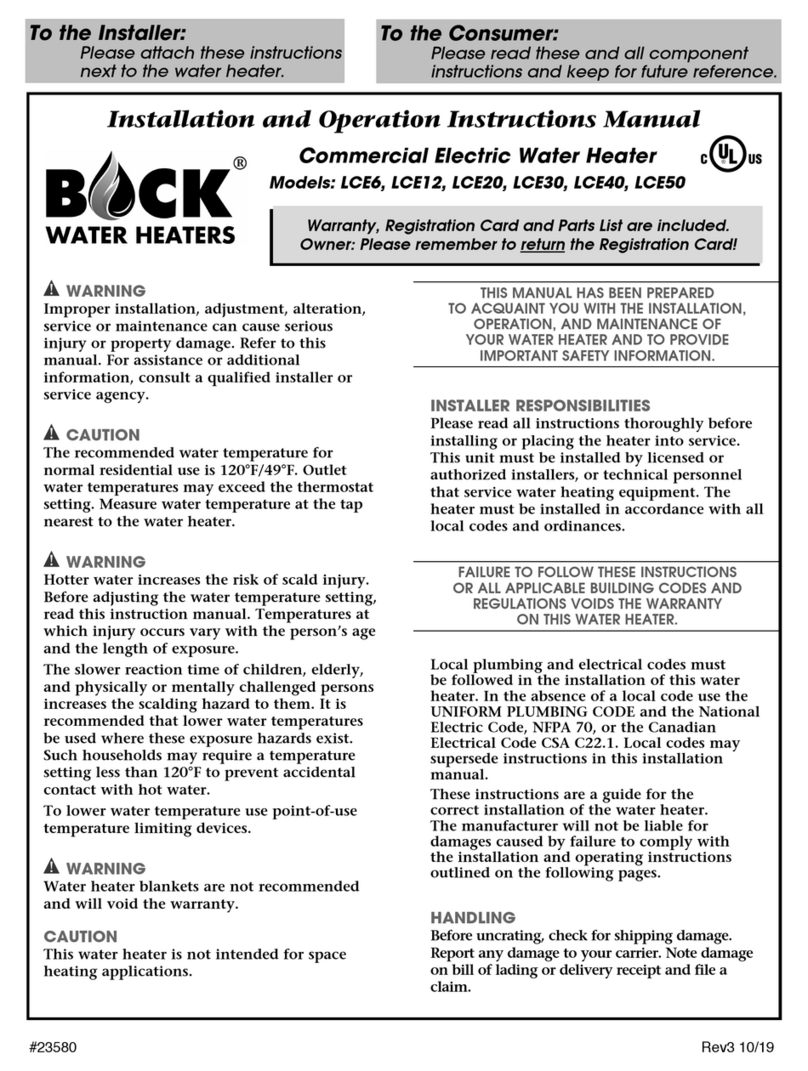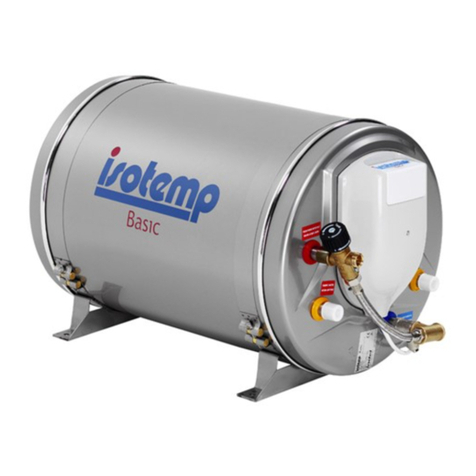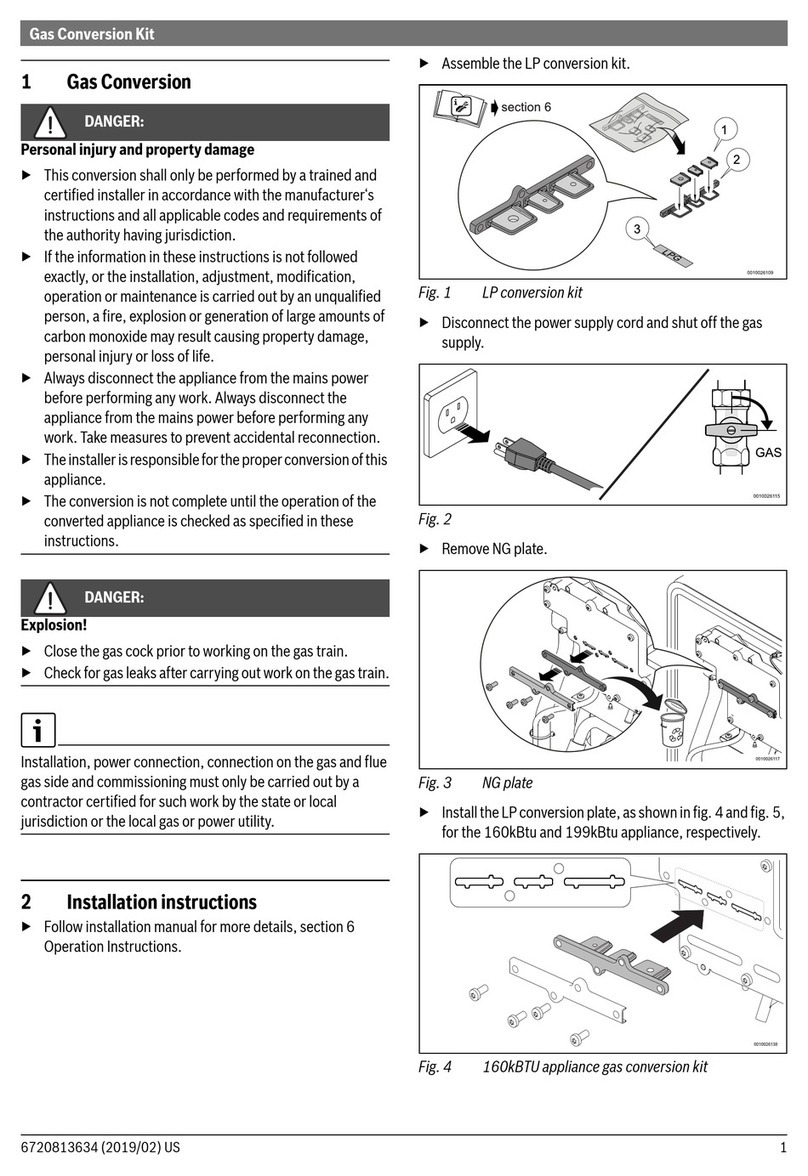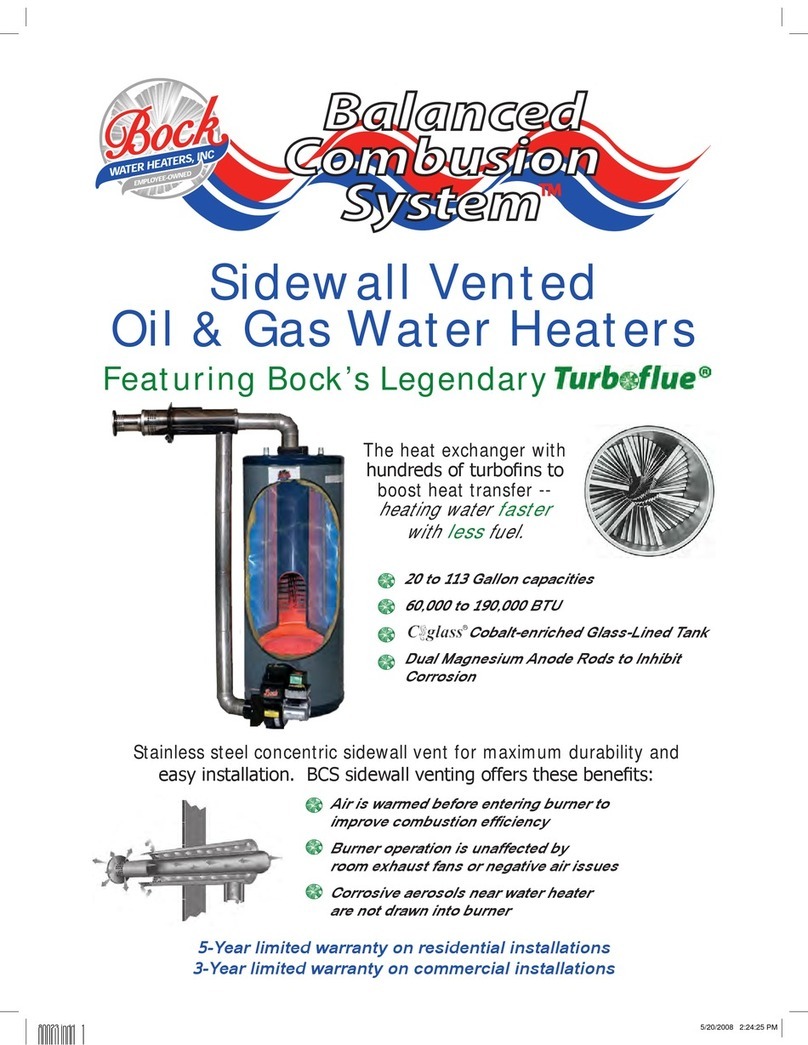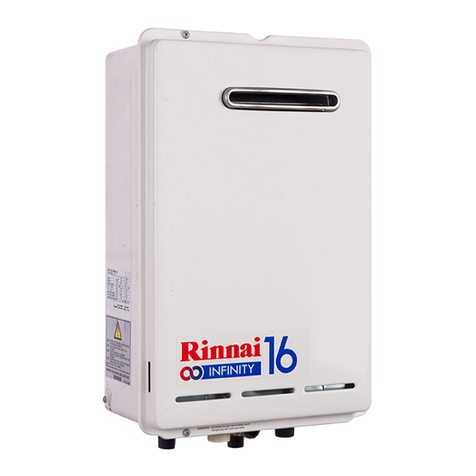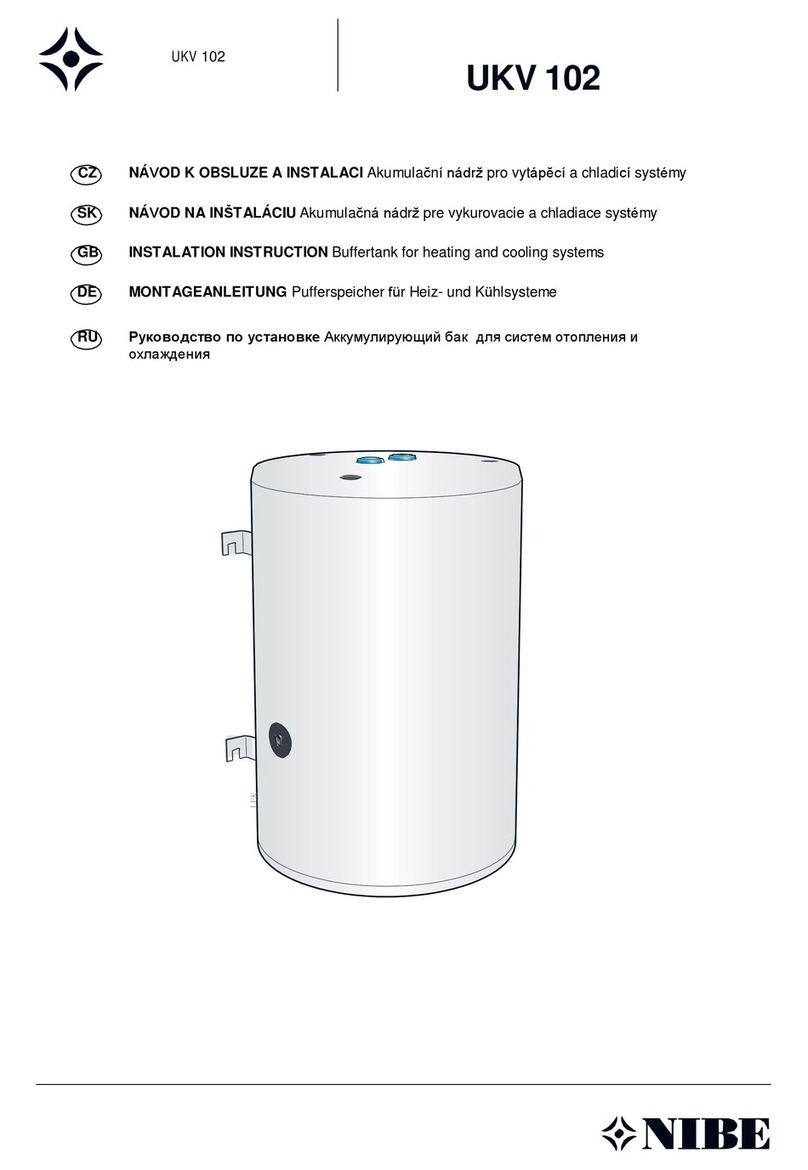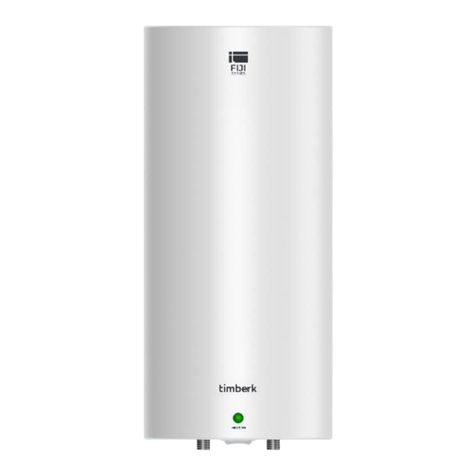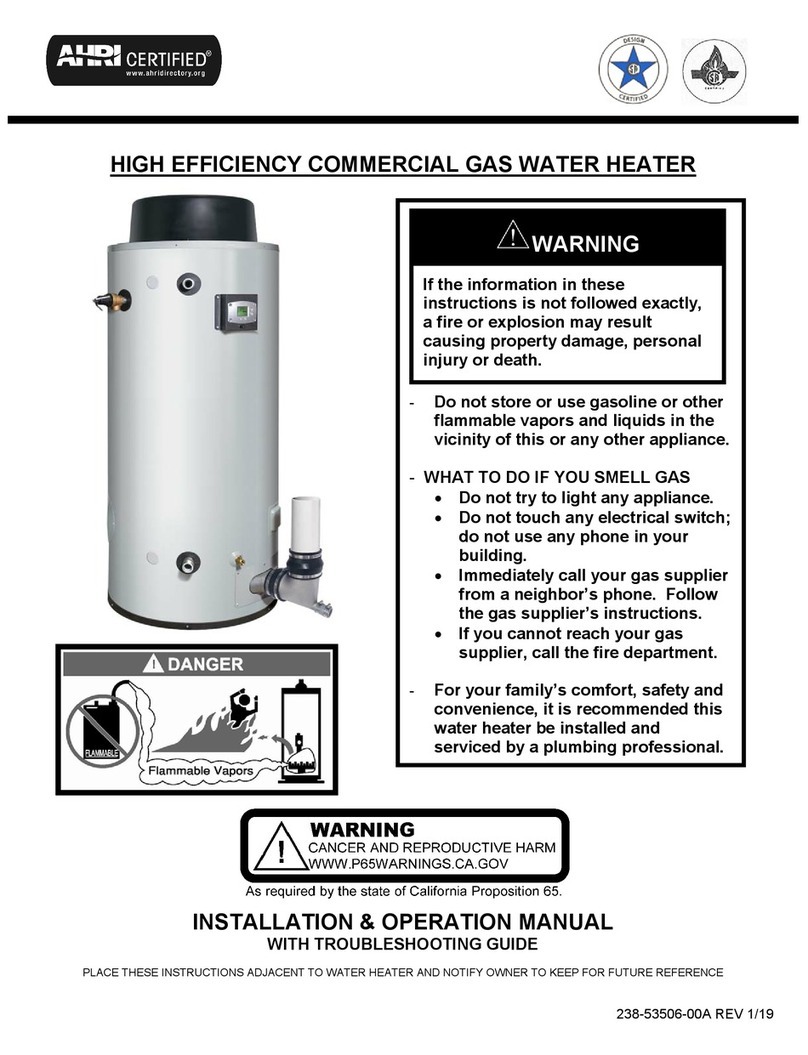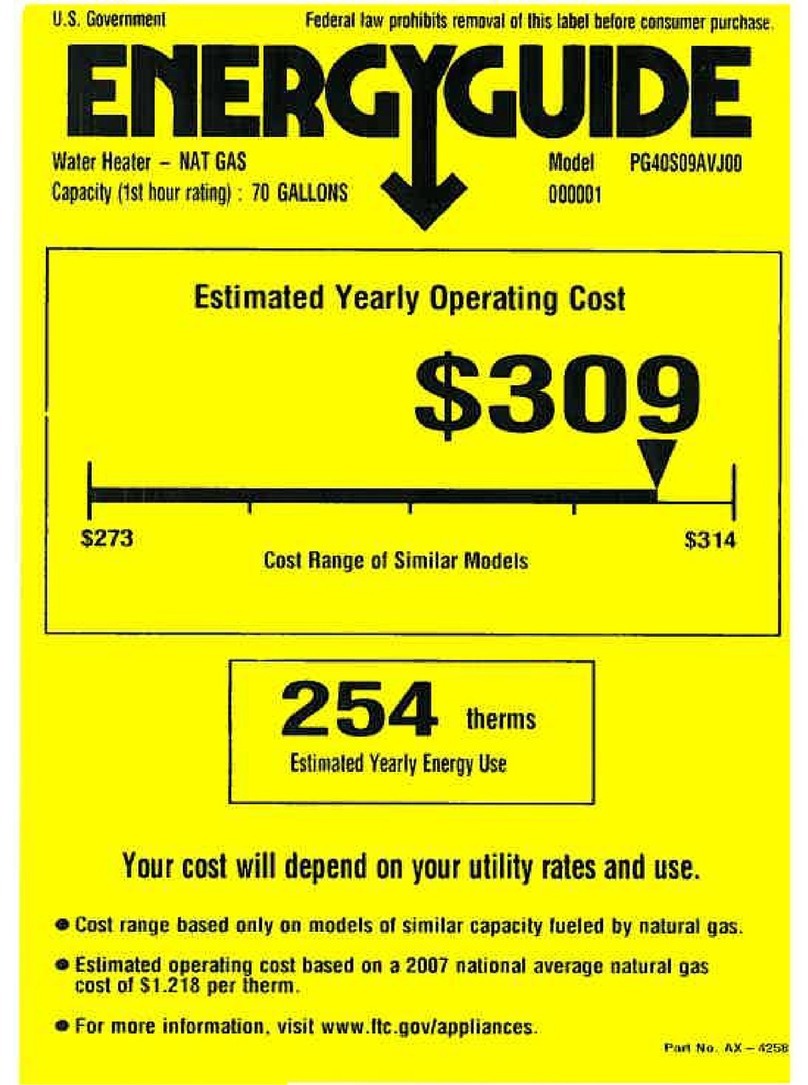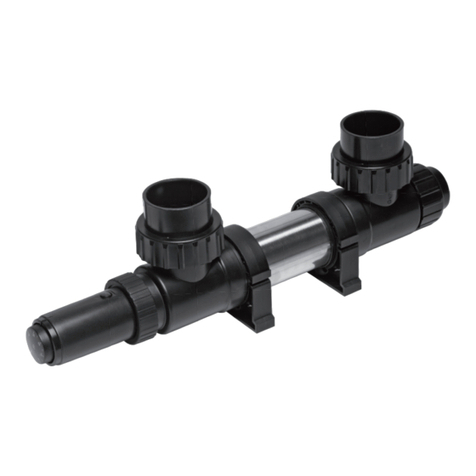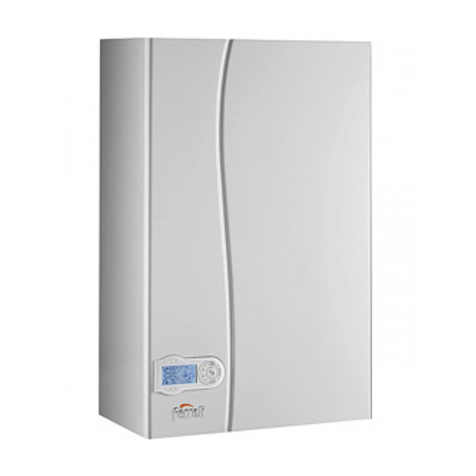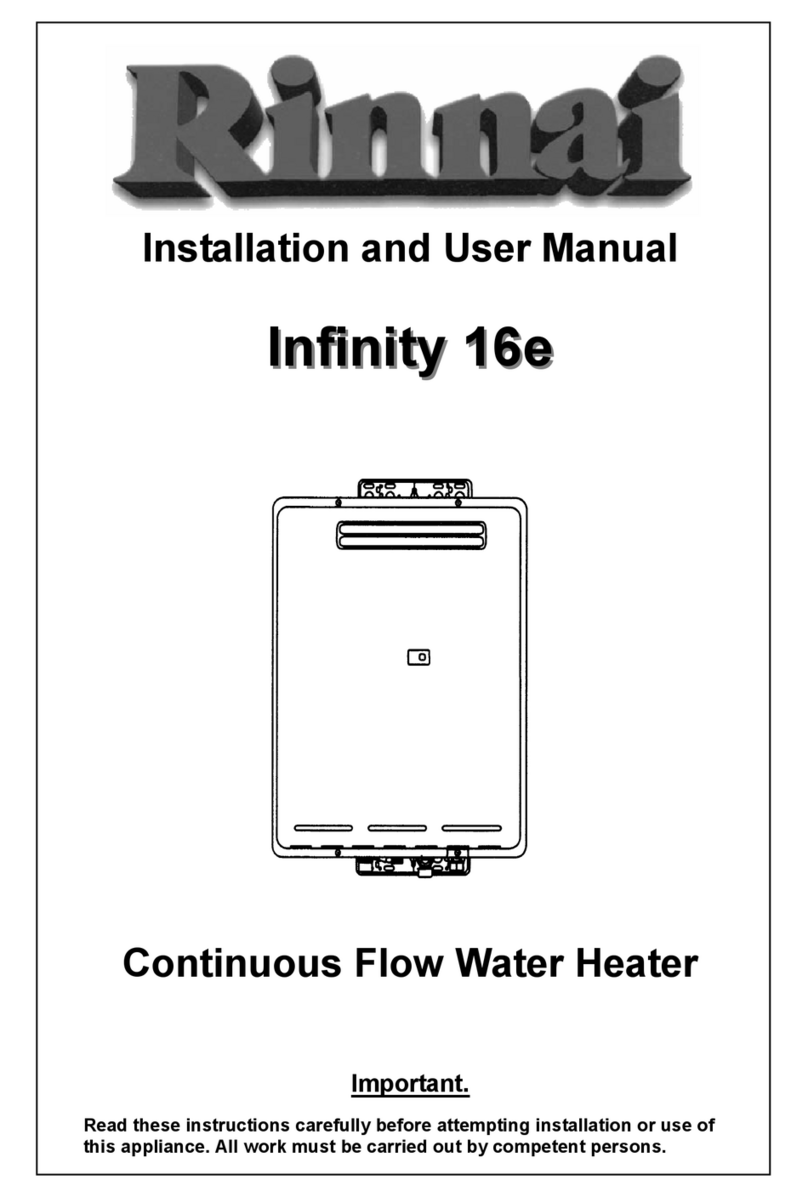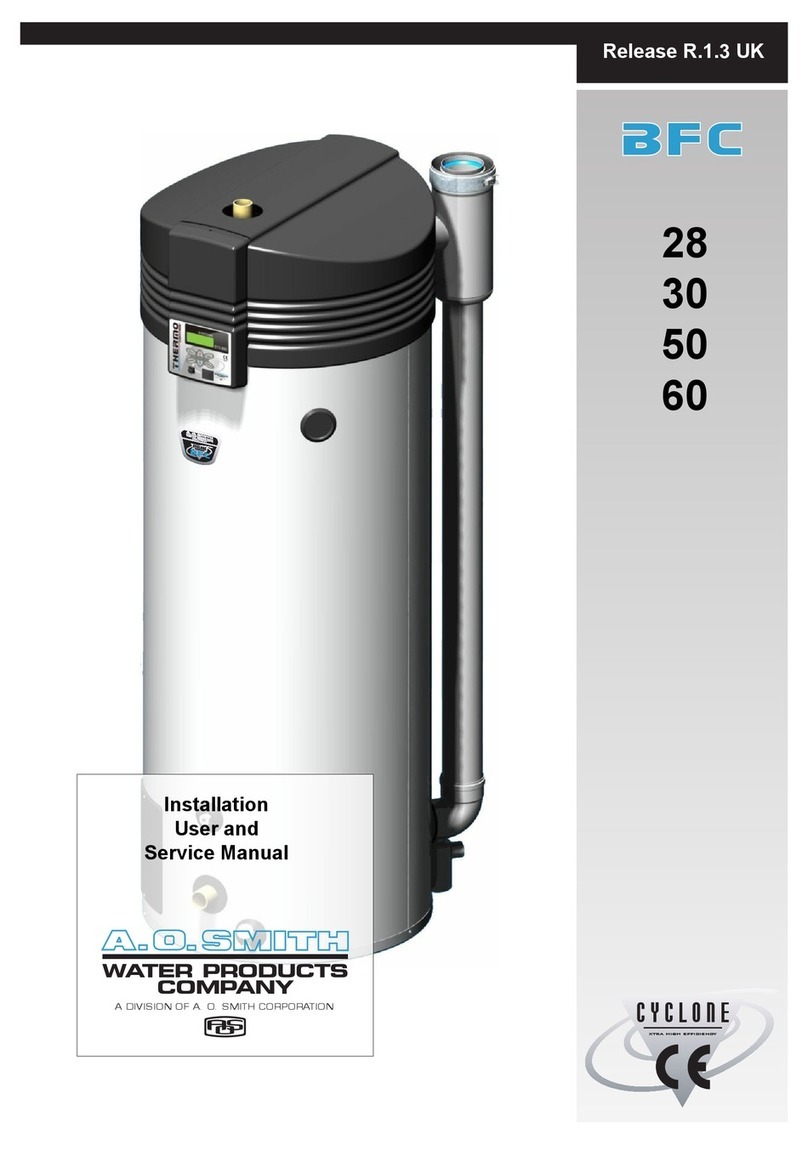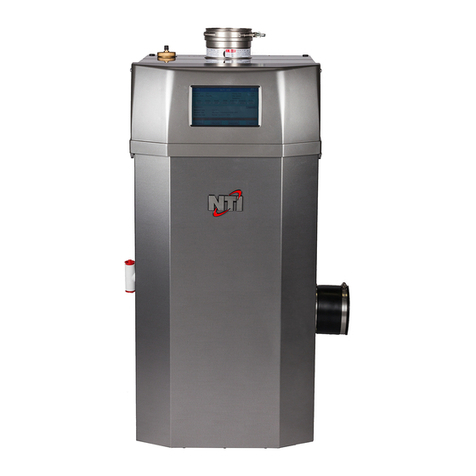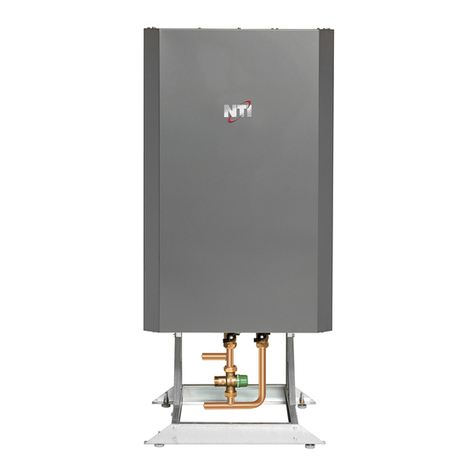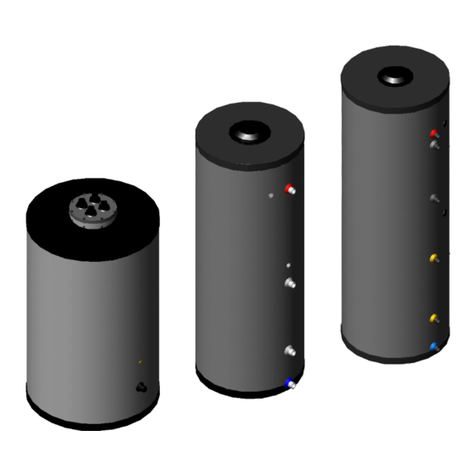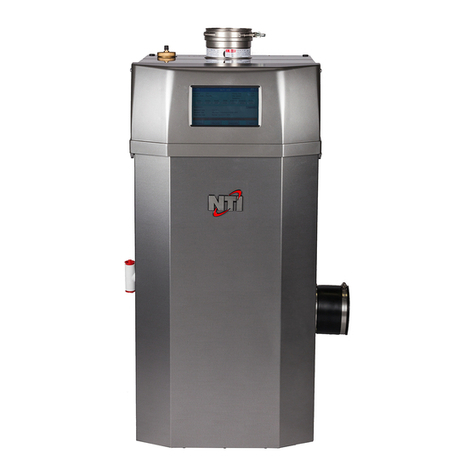Heater can sit on floor.
Connect the cold water inlet pipe to the inlet tapping (marked with a blue ring) and the hot water outlet pipe to the outlet tapping
(marked with a red ring).
The model NTI COMPACT 6 can be piped horizontally from the side or vertically from the top. If you wish to install the unit horiz-
ontally, with the piping connections on the right side, you will have to be certain the tap between the two water tappings is
plugged, the supplied Temperature and Pressure Relief Valve will need to be installed on top. See location of T&P relief valve in Fig.
2/2. If you wish to install the unit vertically, with the piping connections on top, you will have to be certain the tap on the side is
plugged, the supplied Temperature and Pressure Relief Valve will need to be installed on top. See location of T&P relief valve in
Fig. 2/3.
To reduce the risk of excessive pressures and temperatures in this water heater, install the supplied temperature and pressure
protective equipment required by local codes but not less than a combination temperature and pressure relief valve certified by a
nationally recognized testing laboratory that maintains periodic inspection of production of listed equipment or materials, as meeting
the requirements for Relief Valves and Automatic Gas Shut-off Devices for Hot Water Supply Systems, ANSI Z21.22. The supplied
temperature and pressure relief valve is marked with a maximum set pressure (150 psi) that does not exceed the marked
maximum working pressure of the water heater. Install the valve in the opening provided and marked for this purpose in the
water heater, and orient it or provide tubing so that any discharge from the valve will exit within 6 inches above, or at any
distance below, the structural floor,and cannot contact any live electrical part. The discharge opening must not be blocked or
reduced in size under any circumstances.
National Plumbing codes require a drain pan for any water heater installation. Failure to install one is the sole responsibility of owner
and/or installer. Reference UPC 2000 (Uniform Plumbing Code) Section 510- Protection from Damage or IPC 2000 (International
Plumbing Code) Section 504- Safety Devices.
The NTI COMPACT 6 model must be hard wired . As per the National Electric Code the NTI COMPACT 6 needs to be wired
with 12 GA. wire to a 20 amp branch circuit. Remove the junction box covers and feed wires, see Figure A and B. Insert 12 AWG
through conduit into junction box and secure with conduit strain relief (not supplied). Make appropriate wiring connections to the
water heater per the National Electric Code. The unit must be grounded with supplied grounding cable inside junction box. Secure
junction box cover once wiring connections have been made. When theNTI COMPACT 6 is not within sight of the electrical circuit
breakers, a circuit breaker lockout or additional local means of disconnection for all non grounded conductors must be provided that
is within sight of the appliance. [REF NEC 422.31]
Periodic discharge of the temperature and pressure relief valve or failure of the element gasket may be due to thermal expansion in
a closed water supply system. The water utility supply meter may contain a check valve, backflow preventer or water pressure
reducing valve which will create a closed water system. During the heating cycle of the water heater, the water expands causing
pressure inside the water heater to increase. The temperature and pressure relief valve may discharge hot water under these
conditions which results in a loss of energy and a build-up of lime on the relief valve seat.
To prevent this from happening, there are two recommendations:
1. Install a diaphragm-type expansion tank that is suitable for potable water on the cold water supply line. The expansion tank must
have a minimum capacity of 1.5 U.S. gallons for every 50 gallons of stored water.
2. Install a 125 PSI pressure relief valve in the cold water supply line. Make sure the discharge of this valve is directed to an open
drain and protected from freezing. Contact the local water supplier or plumbing inspector for information on how to control this
situation. Do not plug the temperature and pressure relief valve.
Note: For most of these operations, the water will have to be drained from the heater. For all of these operations the cord
should be disconnected and the front cover removed.
1. Pry off the round cover plate (V Fig. 3/1) from its right hand edge (W Fig. 3/1) with a small flat-head screwdriver.
2. Remove the Phillips screw revealed beneath the round cover plate.
3. The cover(C Fig. 3/1)can now be removed by pulling out its left-hand edge. When reassembling, work in the opposite
way being careful to insert the tongue of the cover into the slot.
1) If the heater has been installed with flexible hoses, shut off the power supply and turn the heater upside down over a sink to
drain the water out of it, OR
2) If the heater has been installed with rigid piping, siphon the water out through any (lower) service valve on the (inlet side). Keep a
hot water faucet open while siphoning the water out, OR
3) If the heater has been installed with flexible hoses, it can also be emptied by siphoning through the inlet side hose. Keep a hot
water faucet open while siphoning.
1. Turn off power supply and drain the heater (see previous section).
2. Remove the front cover plate, disconnect terminals X, Y and T (fig. 3/2).
3. Unscrew the 4 heating element retaining nuts F(fig. 3/2).
4. Remove the element. G(fig. 5/1).
The purpose of the anode rod (N Fig. 5/2) is to protect the tank against corrosion. It is critical that the anode rod be inspected
once a year to determine whether it requires replacement. To access the anode rod, the heating element must be removed (see
Section Removing the heating element). Upon inspection, the anode rod surface should appear smooth. If the rod surface appears
pitted, bumpy, rusty, or if the rod is missing completely, then it must be replaced.
For original anode rod sizes:
• NTI COMPACT 2.5, NTI COMPACT 4: length 6 _”, diameter 5/8”
• NTI COMPACT 6: length 8 _”, diameter 5/8”
Certain installations may require more frequent replacement of the anode rod:
• recirculation applications;
• poor water quality;
• galvanic/electrolytic corrosion
• High flow applications
Rusty water is usually an indication that the anode rod requires replacement. If rusty water is present, examine the anode rod
immediately and replace as needed. In the event of poor water quality, we recommend consulting a local water treatment
professional for water treatment options. Always ensure the water heater is grounded. Damage resulting from failure to replace
the anode rod is not covered under the manufacturer’s warranty. For additional questions, please call Bosch Technical Service.
To change the anode road:
1. Turn off the power supply and drain the heater (see Draining the Heater).
2. Remove heating element (see previous section).
3. Remove and replace the anode rod N Fig. 5/2.
4. Refill tank with water before restoring power.
2.1 PERIODIC MAINTENANCE
Removing the cover
Draining the Heater
Removing the heating element
Inspecting the anode rod
G
FIG. 5/1
N
FIG. 5/2
6





















